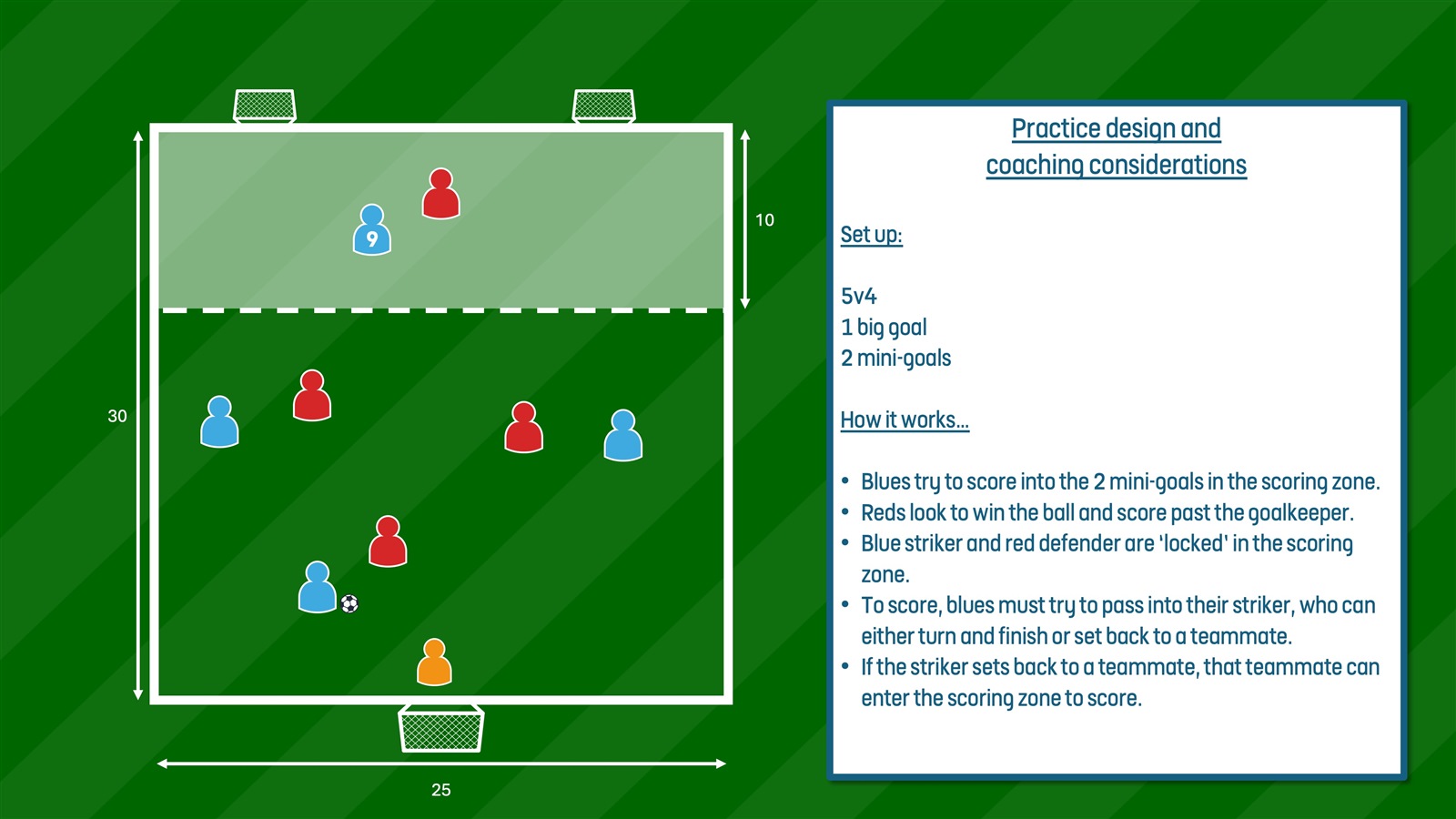Passing, receiving, moving with the ball, turning, and finishing. Your players need to use all of the core skills. Game Insights analyst James Cook delves into passing and receiving, two of the most common. In this blog, we examine the six capabilities alongside core skills, highlighting standout teams and players, before providing practice design considerations.
Passing
Let’s consider the six capabilities with passing…
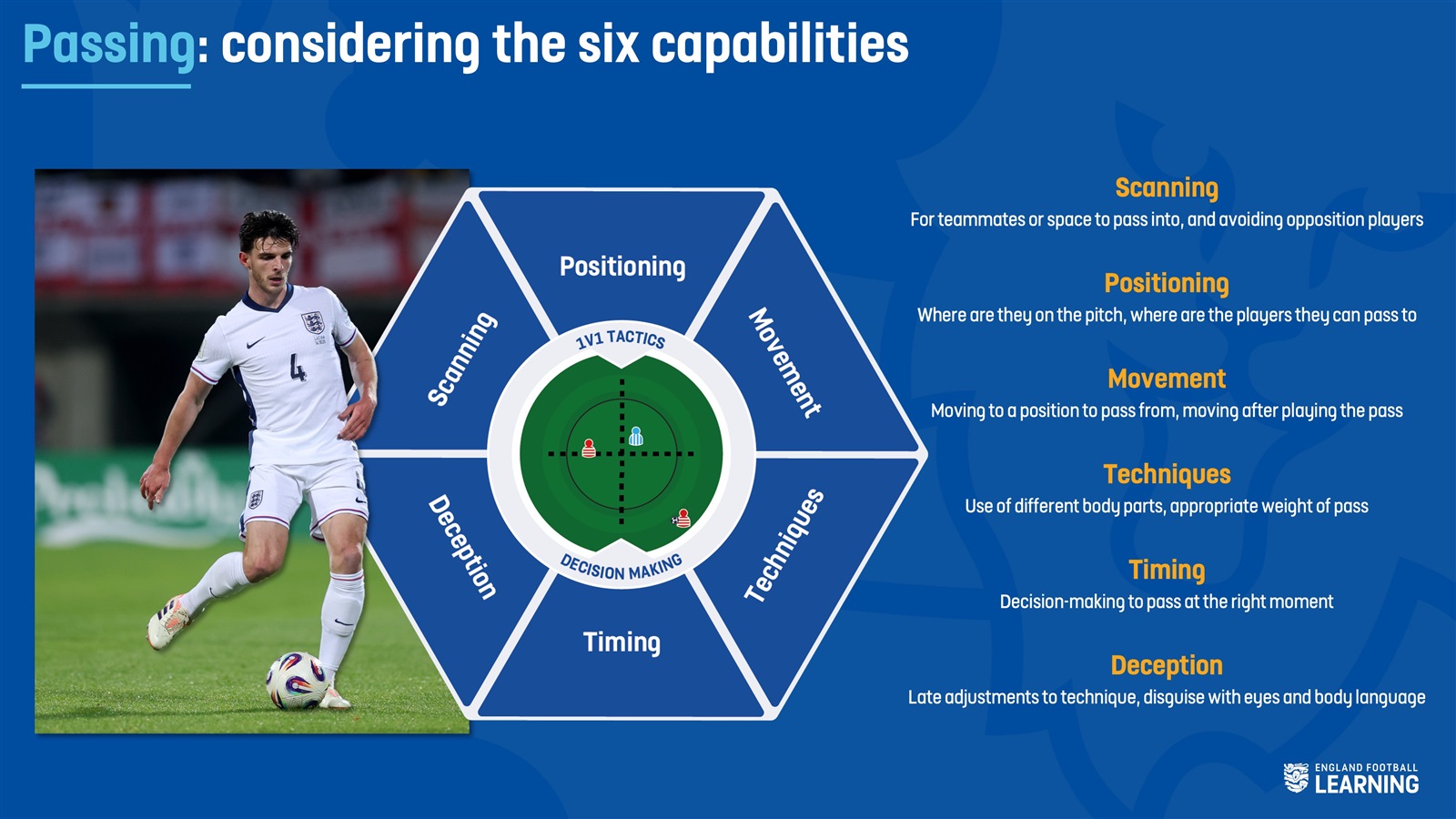
Players need to use all six capabilities before, during, and after passing. But, this could look different for players operating in different systems, tactics and strategies. Or even players in different positions. Check out the Premier League insights below on passes completed by each position.

Defenders and centre midfielders account for over 50% of all passes attempted. These positions are dominating the number of passes a team plays on matchday. How can we ensure that these players are getting enough repetition in training sessions through effective practice design?
To ensure our practice design is as effective as possible, let’s explore some of the passing details:
- Forward pass percentage - How many of the attempted passes were played forward?
- Pass length - How long was the average pass length (in yards)?
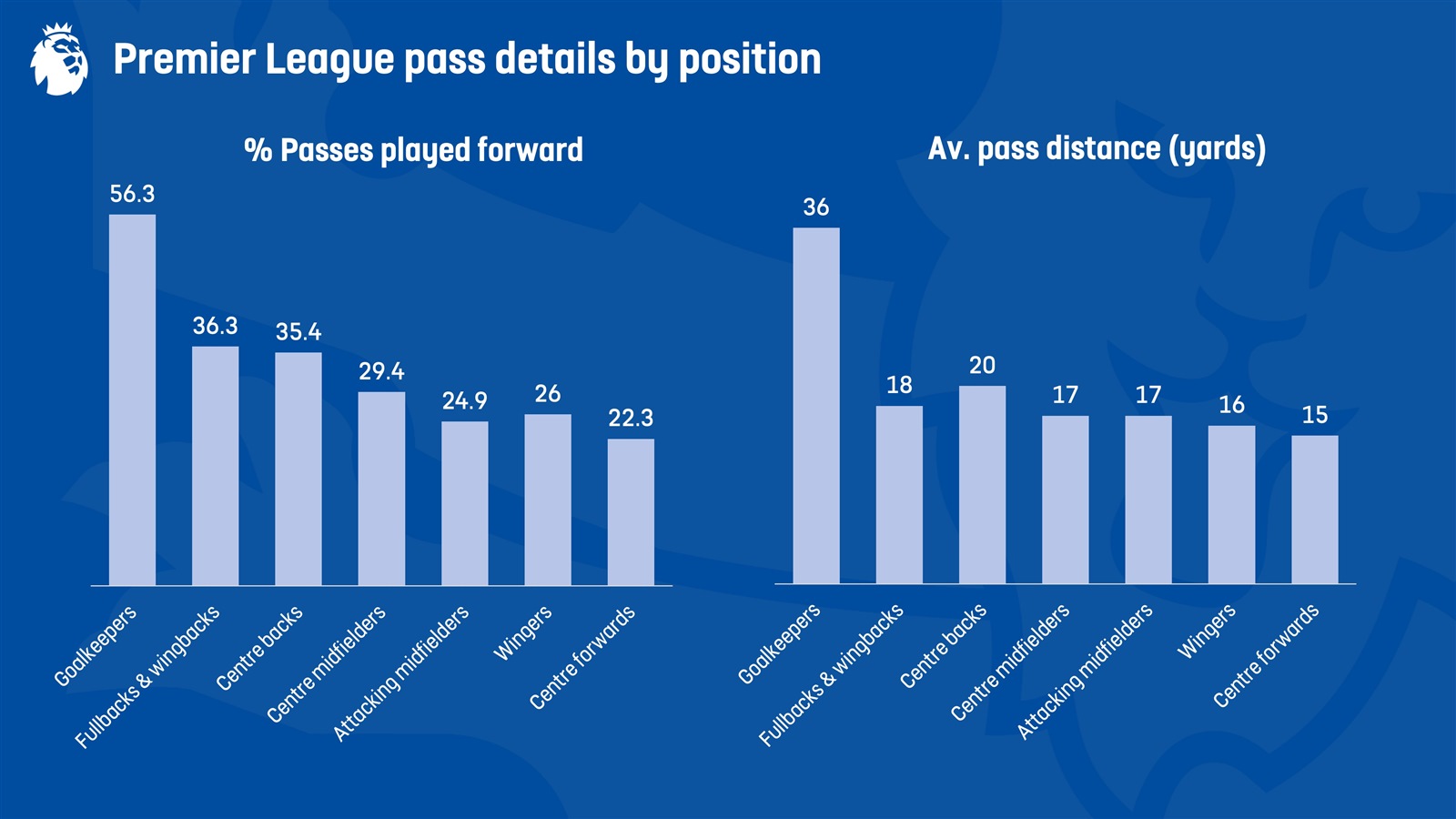
From these insights, we can now see that goalkeepers’ passes are very different to outfielders. They have a requirement to play much longer passes, with over half of their passes being played forwards. When looking at the outfielders, there is a general trend that the further up the pitch the players are, the lower the percentage of passes played forward. However, average passing distances are similar across positions.
From this, we know that position affects pass direction. So, how can we design effective practices that reflect this?
Receiving
Now, let’s consider the six capabilities with receiving…
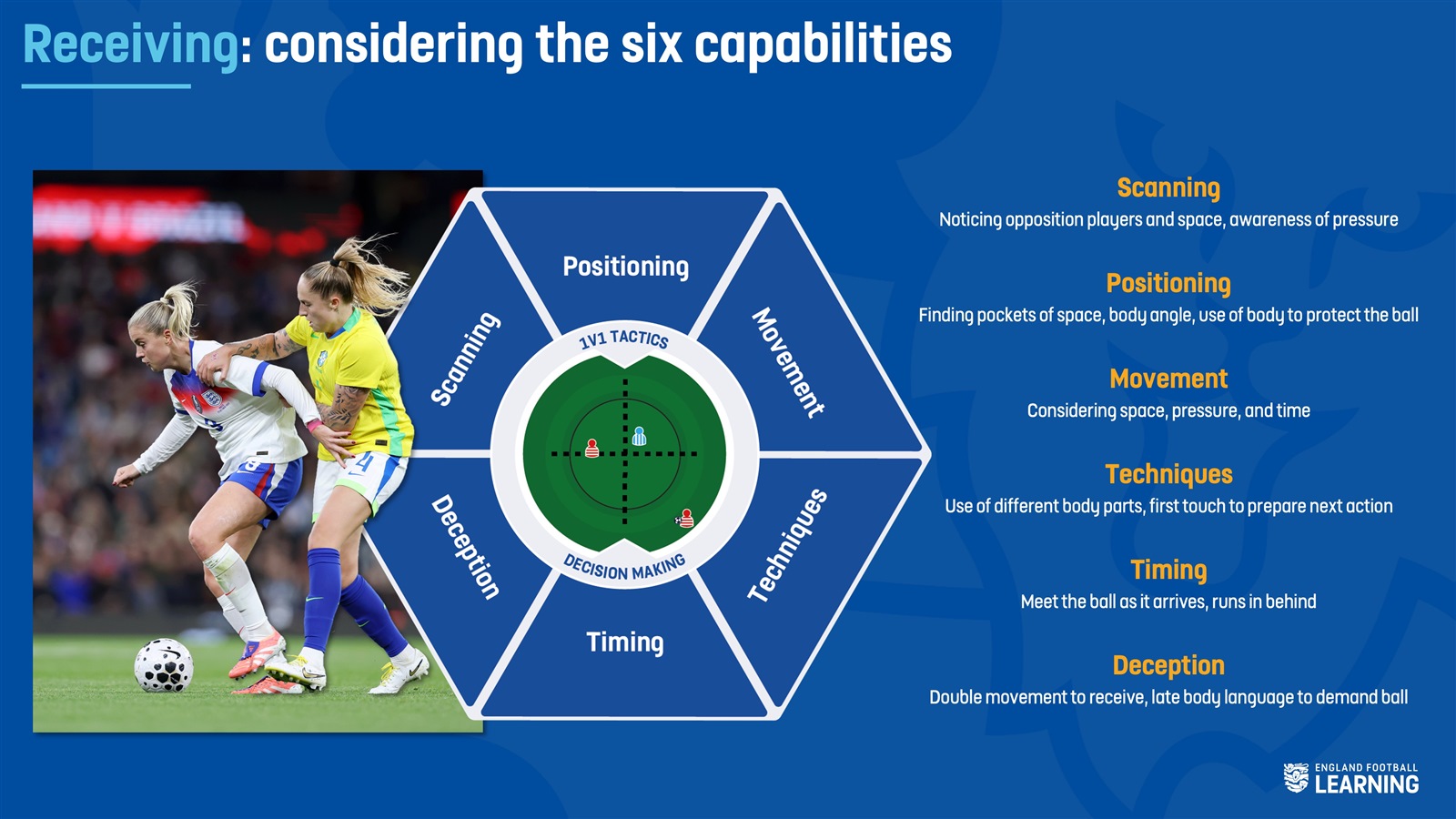
Players need to use all six capabilities before, during, and after receiving the ball. As we’ve just seen by the insights for passing, this can look different for each position. Let’s consider receiving skills for centre forwards.
How important are receiving skills for centre forwards?
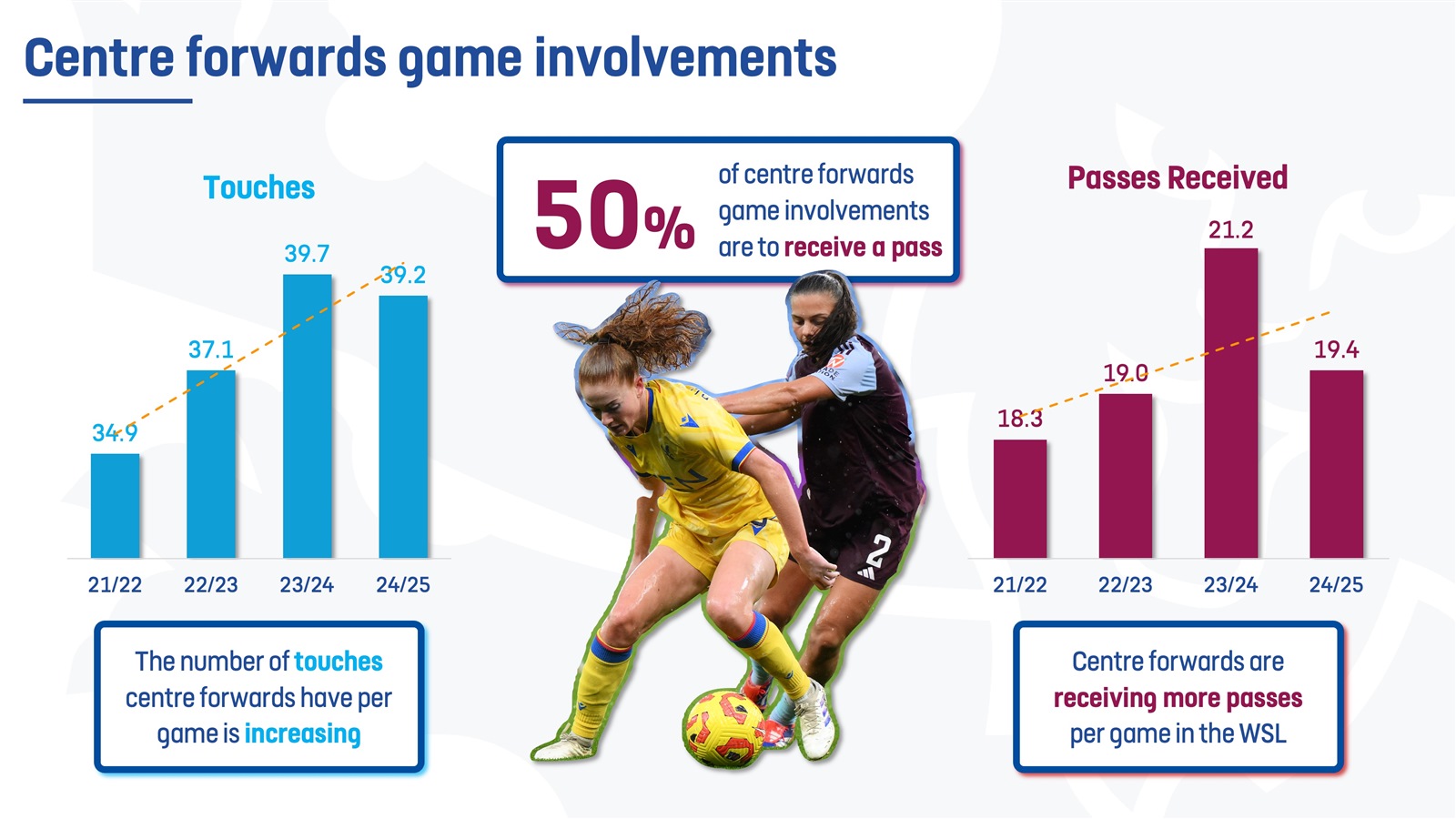
Centre forwards are becoming more involved in the game. In these involvements, over 50% are to receive a pass, making it the most common core skill for a centre forward on matchdays. From the insights above, we can also see that the number of passes received is increasing at a similar rate to the number of touches taken.
Scenarios where centre forwards receive the ball may look different. Let’s drill down into the area of the pitch centre where centre forwards are receiving passes.
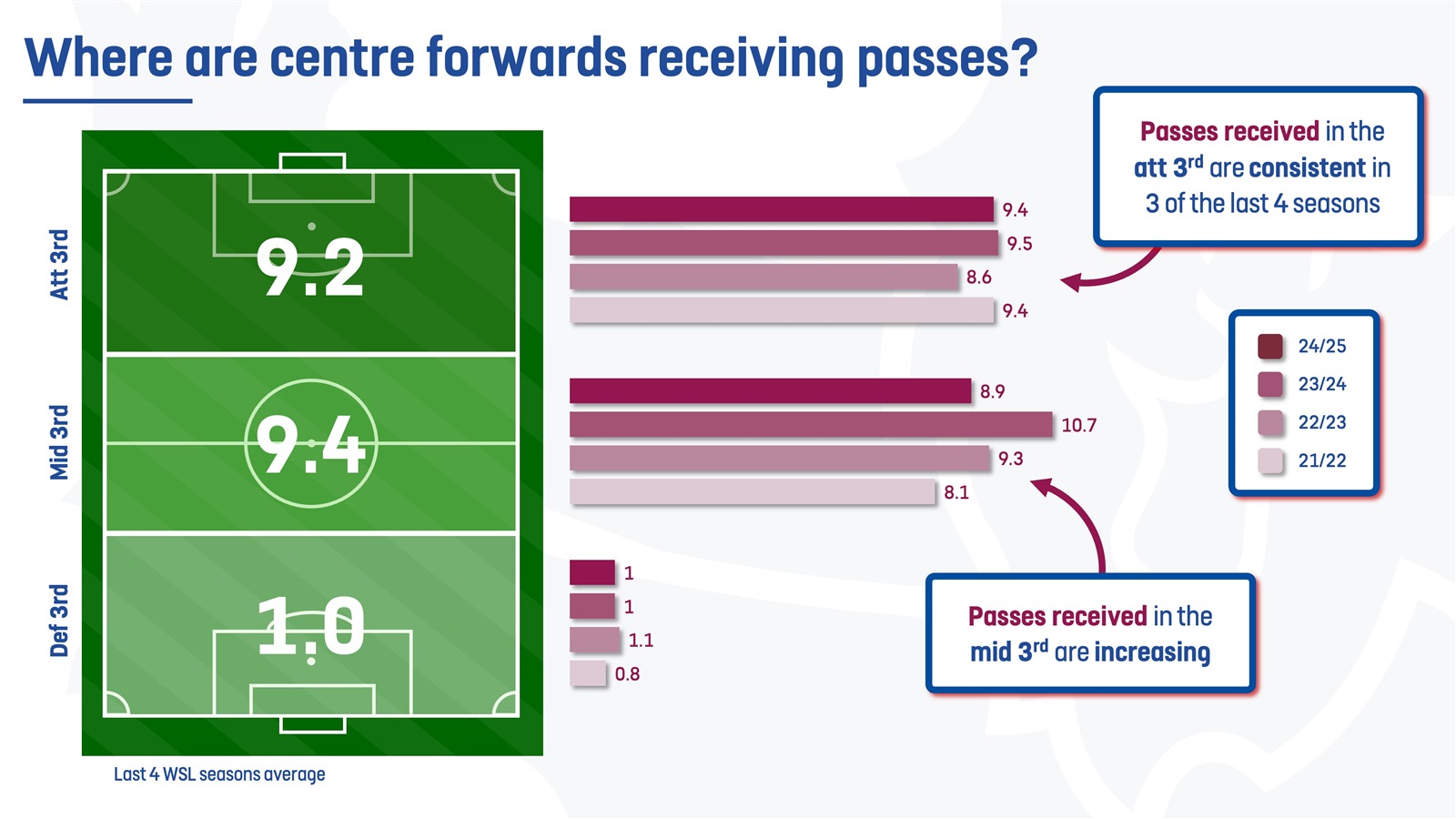
We might think of centre forwards as mainly operating in the attacking third of the pitch. But, these insights suggest they receive the ball just as much in the middle third. How does the pitch location affect their role when receiving the ball?
It's not only where the centre forward is on the pitch, but also the pass into them will affect how they use their receiving skills.
What factors might cause these passes to look different?
- Length of the pass
- Which player is passing to them
- Where on the pitch they are
- The phase of the game
- Is the pass to feet or into space?
Here are three teams’ centre forwards from the WSL in the 2024/25 season. Look at the variation in where the ball is received.
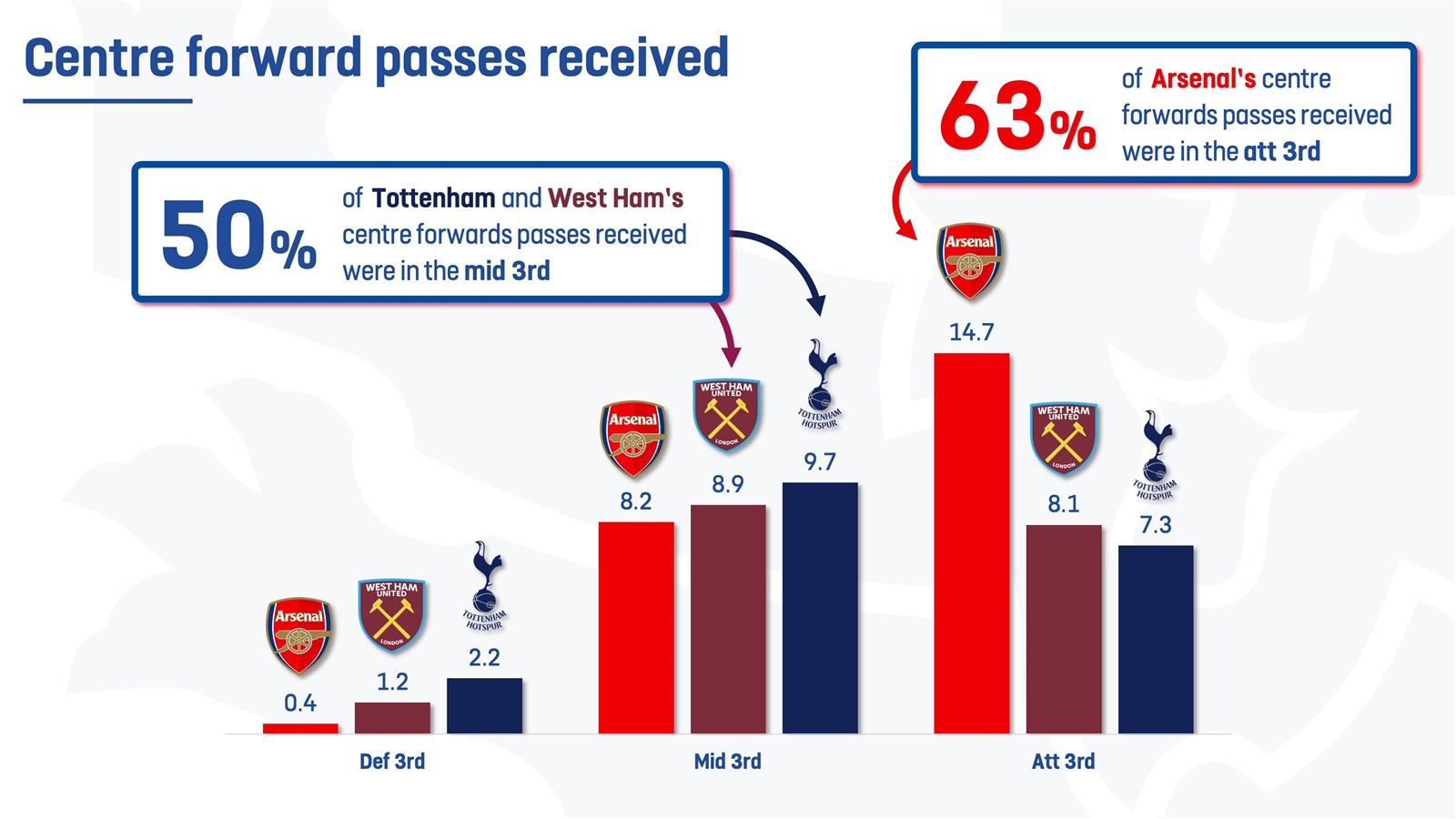
It’s clear not all centre forwards will receive the ball in the same way.
In this case study, there is a team from the top, middle, and bottom of the 2024/25 WSL table. Each of centre forward has a different profile, in Russo, Martinez, and England. Each complements their team’s systems, tactics, and strategies.
Check out the video below. Look at the different moments when each centre forward is receiving the ball in these teams. Consider how the six capabilities for receiving skills differ for each profile of centre forward.
What does receiving for centre forwards in your team look like?
How can you develop these skills through effective practice design?
Practice design
Here is a practice designed by The FA's Conal Murnin, connecting the insights of passing and receiving skills onto the training pitch.
